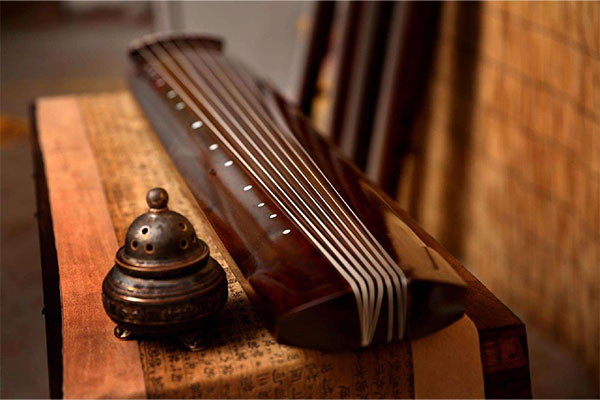China's Intangible Cultural Heritage - Guqin Art
Introduction
Guqin, also known as the "seven-stringed zither", is one of the oldest plucked instruments in China and is known as the first of the four arts of "qin, chess, calligraphy and painting". Guqin art is not only a form of music, but also an important carrier of Chinese traditional culture, embodying the cultural essence of philosophy, literature, aesthetics and other aspects. Guqin music is known as the "sound of heaven and earth" for its deep, distant timbre and rich expressiveness.
History
The history of Guqin can be traced back to the Shang and Zhou dynasties more than 3,000 years ago. It is an important tool for ancient Chinese literati to cultivate their character. During the Spring and Autumn Period and the Warring States Period, Guqin gradually became a symbol of the literati class. Historical celebrities such as Confucius and Boya have a deep connection with Guqin. During the Tang and Song Dynasties, Guqin art reached its peak and became an important part of literati gatherings and court music. During the Ming and Qing Dynasties, Guqin art developed further and formed a variety of schools and playing styles.
Local Characteristics
Guqin art is popular all over China, but it is mainly concentrated in areas with a profound cultural heritage, such as Jiangsu, Zhejiang, Sichuan, Beijing and other places. Among them, cities such as Suzhou, Hangzhou, and Chengdu are important birthplaces and inheritance places of Guqin art. Guqin schools in different regions have their own characteristics, such as the elegance of the Zhejiang School, the boldness of the Shu School, and the delicacy of the Guangling School, which show the diversity of Guqin art.
Culture
Guqin art is an important part of Chinese traditional culture. Its music is mostly drawn from natural landscapes, historical stories, philosophical thoughts, etc., reflecting the aesthetic taste and cultural pursuit of ancient Chinese literati. Guqin repertoires such as "Flowing Water", "Guangling San", "Three Variations on Plum Blossoms", etc. are not only musical works, but also cultural classics. The performance of Guqin pays attention to "clear, subtle, light, and distant", reflecting the spiritual realm and philosophical thoughts of ancient Chinese literati.
Performing Arts
The performing arts of Guqin are mainly solo, and the performers express emotions and artistic conception through changes in fingering and control of timbre. The timbre of Guqin is deep and distant, with strong expressiveness. Guqin's playing techniques are rich and varied, such as "chanting", "猱", "Chao", "note", etc., each of which has its unique artistic effect. The performance environment of Guqin is usually quiet and elegant, emphasizing the harmony between man and nature.
Inheritance and Development
As China's intangible cultural heritage, Guqin art has received extensive attention and protection from the country and society. Many local governments and cultural institutions actively carry out the inheritance and promotion of Guqin art and cultivate a new generation of Guqin performers. At the same time, Guqin art is also constantly innovating and combining with modern music forms to show new vitality.
Conclusion
Guqin art is a treasure of Chinese traditional culture, carrying rich historical and cultural connotations. By protecting and inheriting this ancient art form, we can not only appreciate the unique charm of Guqin music, but also better understand and promote China's traditional culture.







